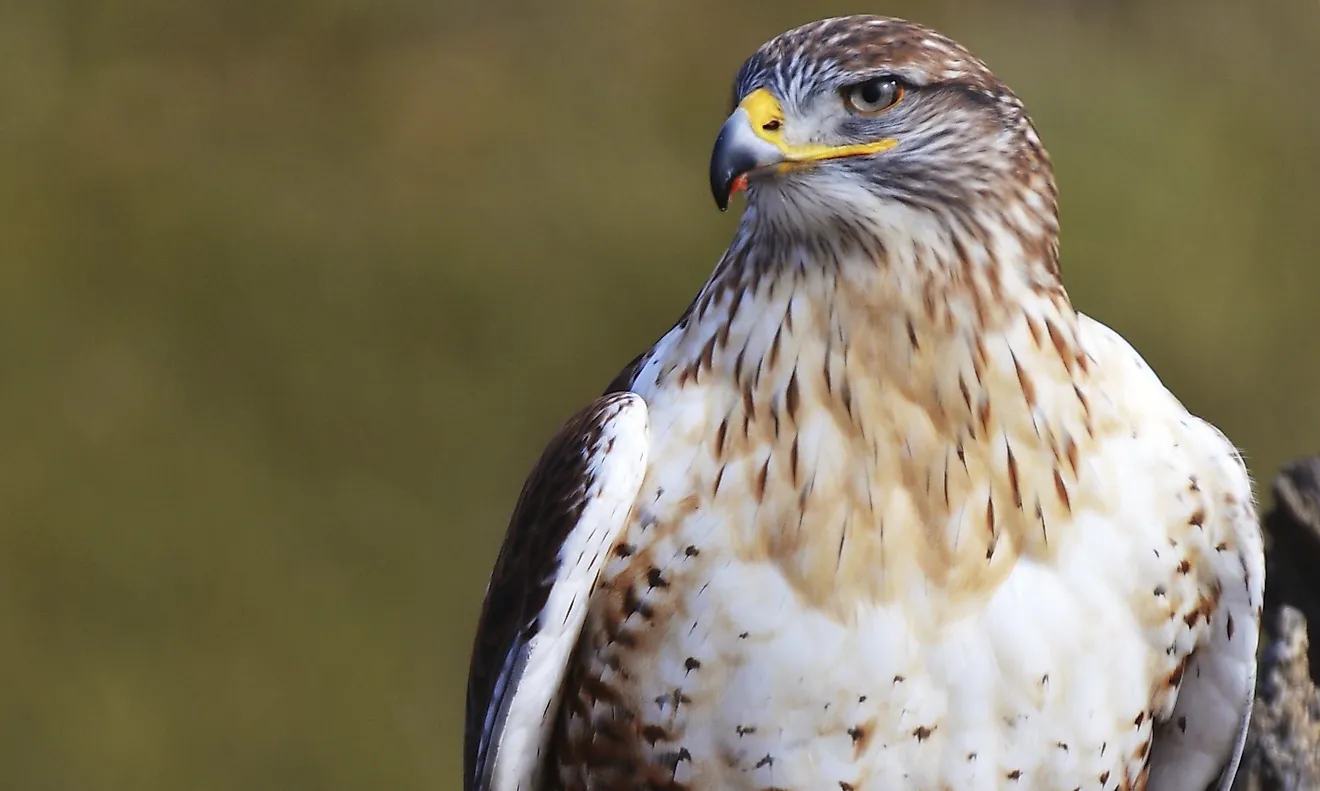Ferruginous Hawk: Animals of North America

5. Physical Description
The Ferruginous hawk has a white head, feathered legs, and streaked, ruse-brown shoulders and back. Its underparts are known to have scattered streaks, and it has gray-brown wings. The tail of the ferruginous hawk is white with a beautiful rust-brown wash. Female ferruginous hawks are generally somewhat larger than males, though there is a slight overlap between large males and small females in the range of measurements. The length of an average adult Ferruginous hawk is about 1.7 to 2.3 feet (51 to 69 centimeters), and they possess an average wingspan of between 4 and 5 feet (122 and 152 centimeters). The weight of a ferruginous hawk ranges between around 2.2 and 5 pounds (977 and 2,267 grams).
4. Diet
The ferruginous hawk is known to prey on medium-sized mammals. It typically does so in open locations with sparse vegetation, such as badlands, prairies and plains. They mainly hunt for squirrels, jackrabbits, prairie dogs, and number of other, smaller animals, particularly rodents. Owing to their wide gape, these birds have the ability to swallow much larger mammals as compared to other, similarly sized raptors. The ferruginous hawk is known to perch in raised areas or stand over mammal burrows when hunting. Most interestingly, they keep an eye on the hunting patterns of red-tailed hawks in order to discover mammal-rich populations.
3. Habitat and Range
As a strictly North American species, the ferruginous hawk is typically found in southwestern Canada, the western United States, and northern Mexico. These hawks are known to live in open country including steppe-deserts, dry prairies, and sagebrush-covered areas, where they prey upon the large populations of small mammals that live within their short vegetation. It is also common for the ferruginous hawk to be found on cultivated croplands such as plowed fields. Although it is a migratory bird, it only travels short distances between its wintering and breeding grounds. Its travels are restricted between Canada, Mexico, and the US.
2. Behavior
The flight of the ferruginous hawk is active, and is characterized by slow wing beats, like those of a small eagle. It soars with its wings held slightly raised, although its wingtips remain nearly flat. As it hunts, the bird can turn into the wind and hover or kite in place. Ferruginous hawks have also been seen hunting on the ground. The ferruginous hawk also uses hovering and low cruising over the ground to facilitate its hunting purposes. The bird is territorial and holds conflicts with several other large species of raptors, such as the short-eared owls, the great horned owls, hen harriers, ravens, magpies, and golden eagles. These birds of prey will compete over territories, food, and defense of their nests.
1. Reproduction
The egg-laying period of the ferruginous hawk varies with weather, latitude, and food supply. In the Canadian parts of the bird’s range, it lays its eggs from the latter part of April through late June, whereas it does so from the middle of March through the middle of May farther south. Both male and female ferruginous hawks take part in the incubation of the eggs, which lasts for around 32 days. Females lay between 3 and 5 eggs and, once the eggs hatch, it is necessary for the parents to sit on the young chicks for at least a week to make sure they don’t become too cold in the night, or too hot in the middle of the day. The young start flying in about 5 to 6 weeks after birth, and reach sexual maturity themselves in two years.











